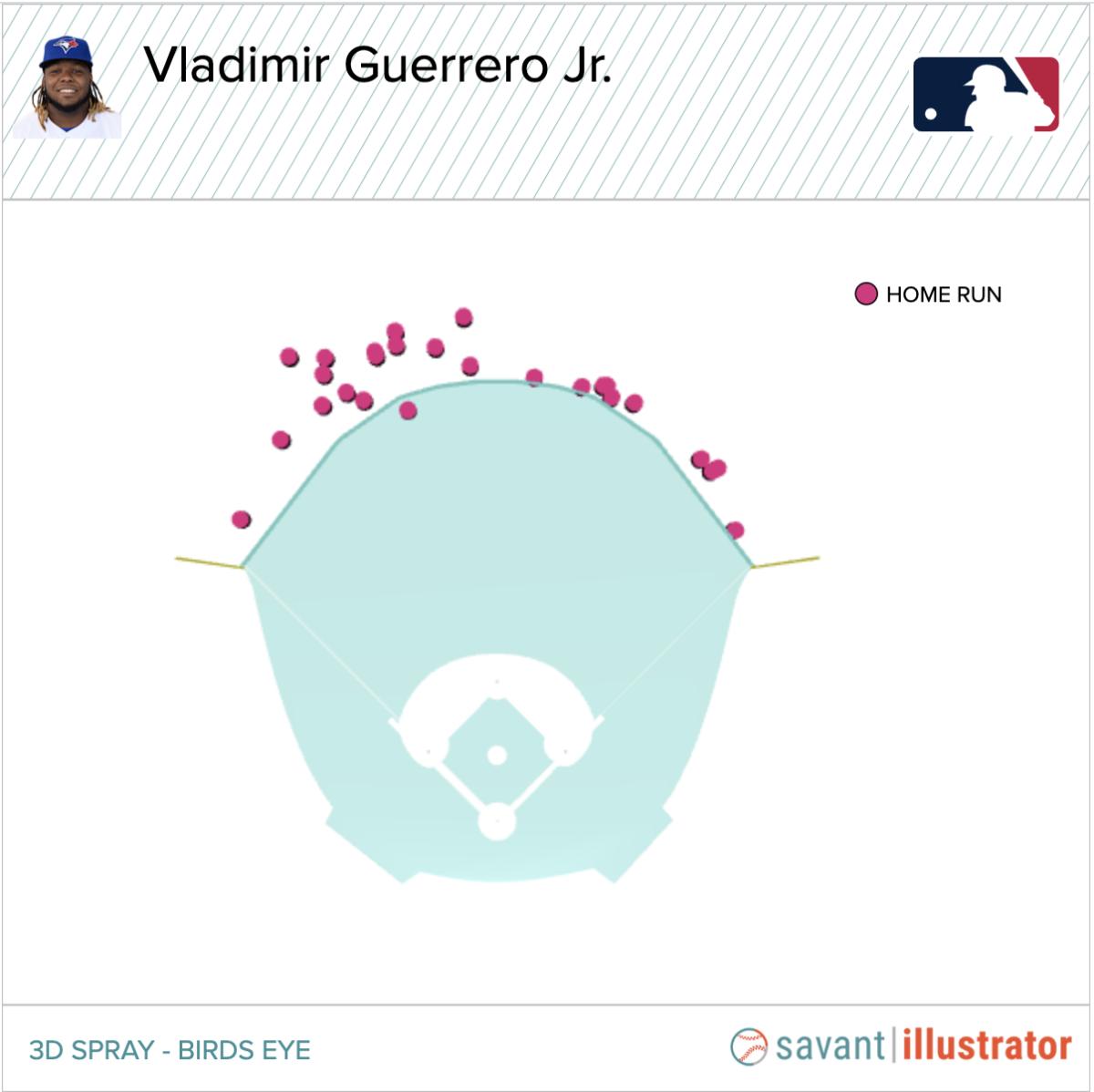Blue Jays ‘Whole Field’ Hitting Approach Elevates Offense

Teoscar Hernández stepped back from home plate as a wide would-be ball four was called a strike by umpire Bruce Dreckman. Jeers fell from the bleachers but Hernández immediately stepped back in.
Baltimore’s Jorge Lopez tried to pull the count full with a sinker down the gut, but Toronto’s silver slugging outfielder watched the pitch fall deep into the zone before shooting it into right field.
Since coming off the COVID-19 Injured List in late-April, Hernandez is hitting over .300 and has cashed the second-most RBIs in Major League Baseball in that time. His at bats are crucial, hitting behind an AL MVP favorite, and his approach Sunday against Baltimore embodied the discipline that has brought success to Toronto’s entire lineup.
Sitting back on pitches and using the entire field is something Blue Jays hitting coach Guillermo Martínez has been preaching since he was a minor league coordinator in 2018, he said Sunday morning. It’s an approach that helped Hernández become one of five Blue Jay finalists in 2021 All Star Game voting, and a talent young stars Bo Bichette and Vlad Guerrero Jr. have already mastered.
“If you’re able to see the ball deep in the zone you can recognize pitches and make good swing decisions,” Martínez said.
Guerrero Jr. nodded along to his walk-up song as the Buffalo wind blew his hair back over his shoulder. With two men on, Guerrero watched a first-pitch called strike nab the outside of the zone. After whiffing on the next pitch, Baltimore's Lopez tried to attack the American League HR leader inside. Guerrero quickly took what Lopez gave him, turned on the sinker, and shot a grounder over third base to cash two runs.
Toronto’s approach doesn’t mean every hit will drop into the opposite field, but it allows hitters to force opponents into straight-up defense and to find hits from line to line. Most of Toronto’s top hitters have a more even distribution of hits across the field, slashing the ball to all fields and hitting it hard.

In the era of the supershift, 10 of Guerrero Jr.’s 26 homers have left the opposite field this season, and five of Bichette’s 14 jacks have gone oppo. Of the top 65 MLB hitters by hits to the opposite field, five are Blue Jays and Bichette is sixth in all of baseball. On Sunday, Cavan Biggio slashed a first-pitch single into left field in the fourth inning and added an opposite-field double an inning later to cash two insurance runs.
“Ever since [Biggio] came back, he’s been hitting better because he’s using the whole field,” Blue Jays manager Charlie Montoyo said.
In the first round of batting practice every day, Guerrero focuses solely on opposite-field grounders and liners. Reese McGuire, who raised his batting average to .321 Sunday, focuses on 'not trying to do too much' by practicing with oppo flips, setting a tee up on the outside of the zone, and focusing on hitting across the field in the batting cage, he said.
Toronto’s offensive success comes primarily from having good hitters — they have three of the top 50 qualified hitters in baseball by wRC+ — but the approach Martínez and Montoyo have been publicly and internally preaching for years can be seen down the lineup.
Opposite field doubles allow the Blue Jays to win a game like Sunday’s, where they failed to hit a homer for the first time in the series, and the approach has further diversified an already dangerous attack.
